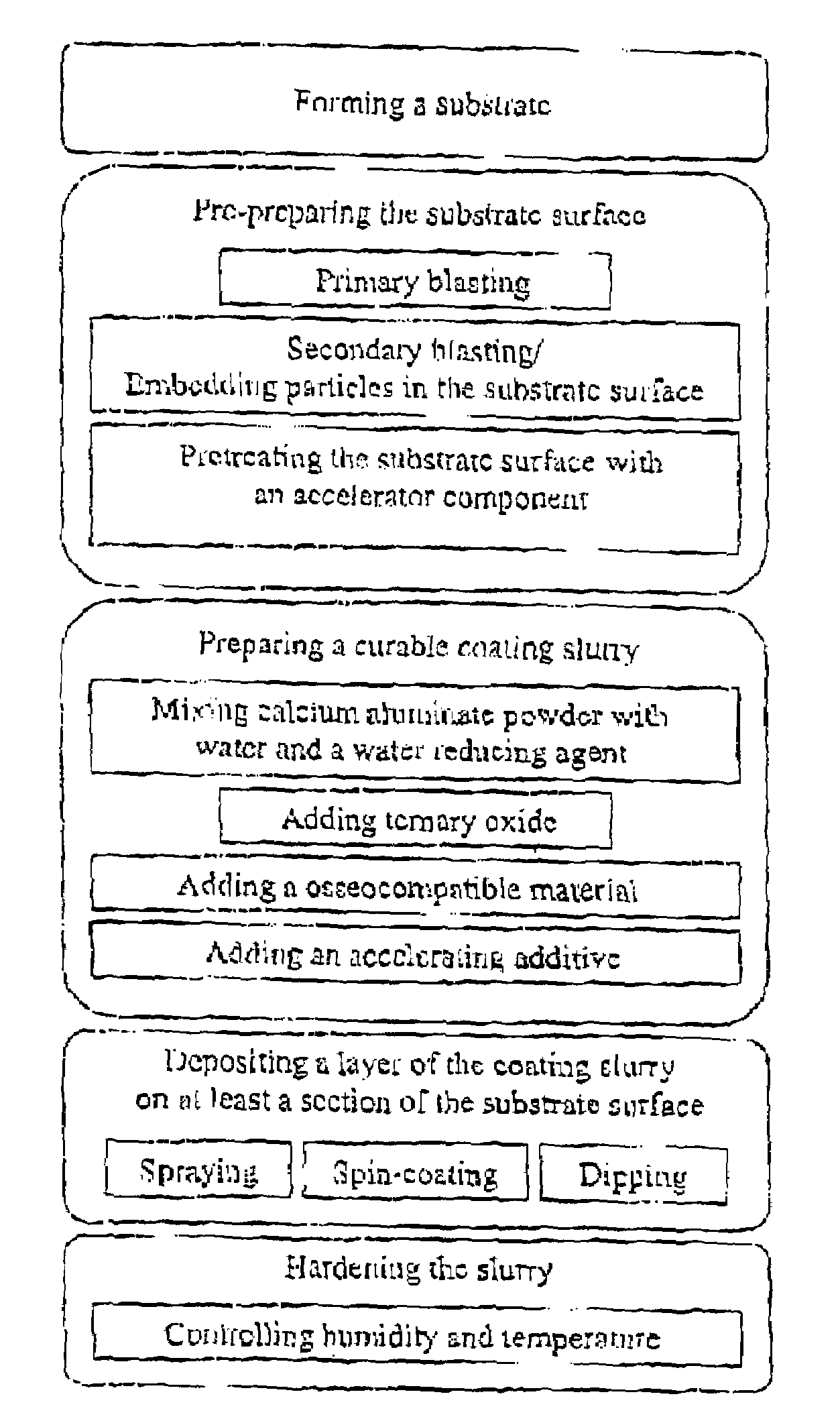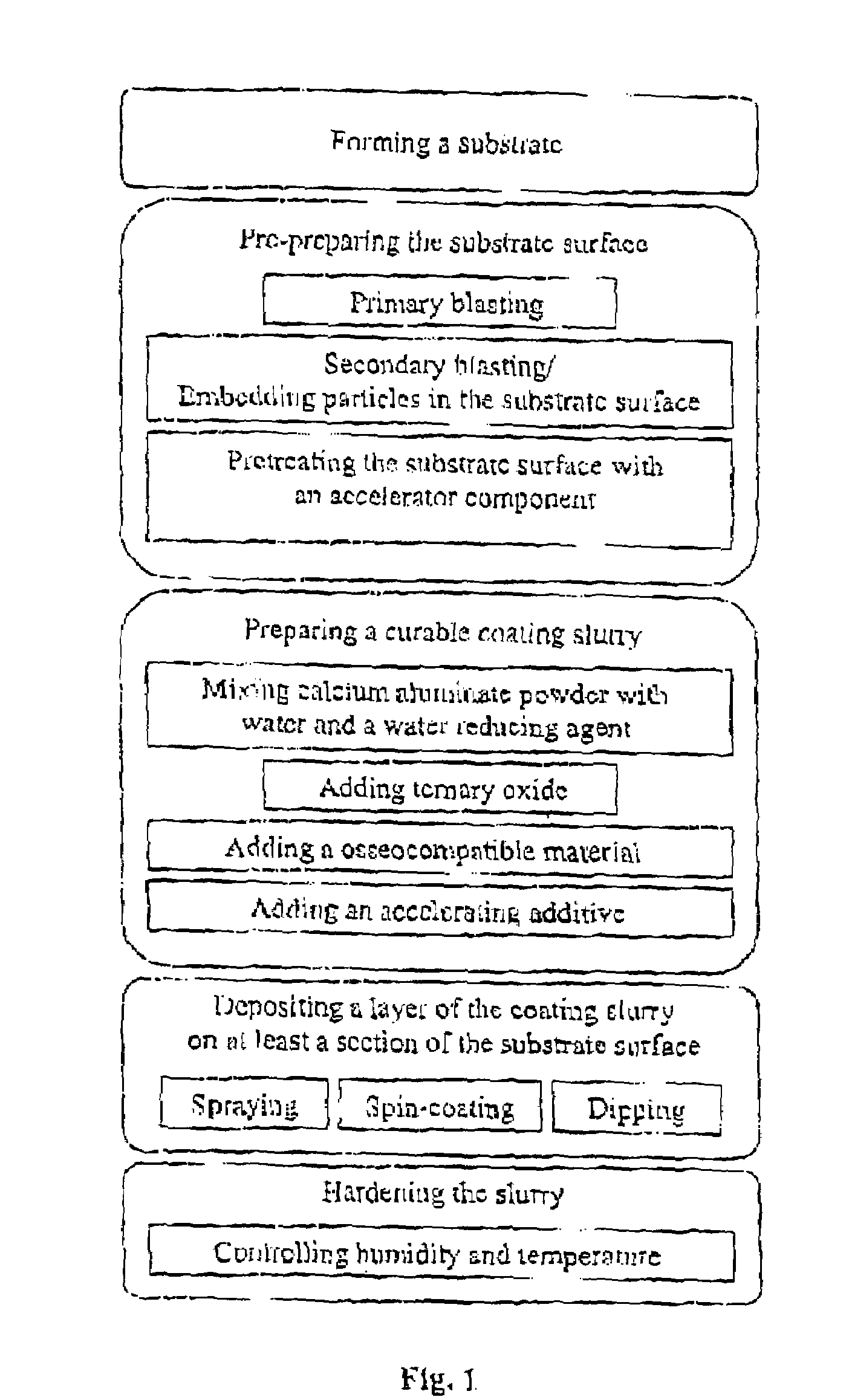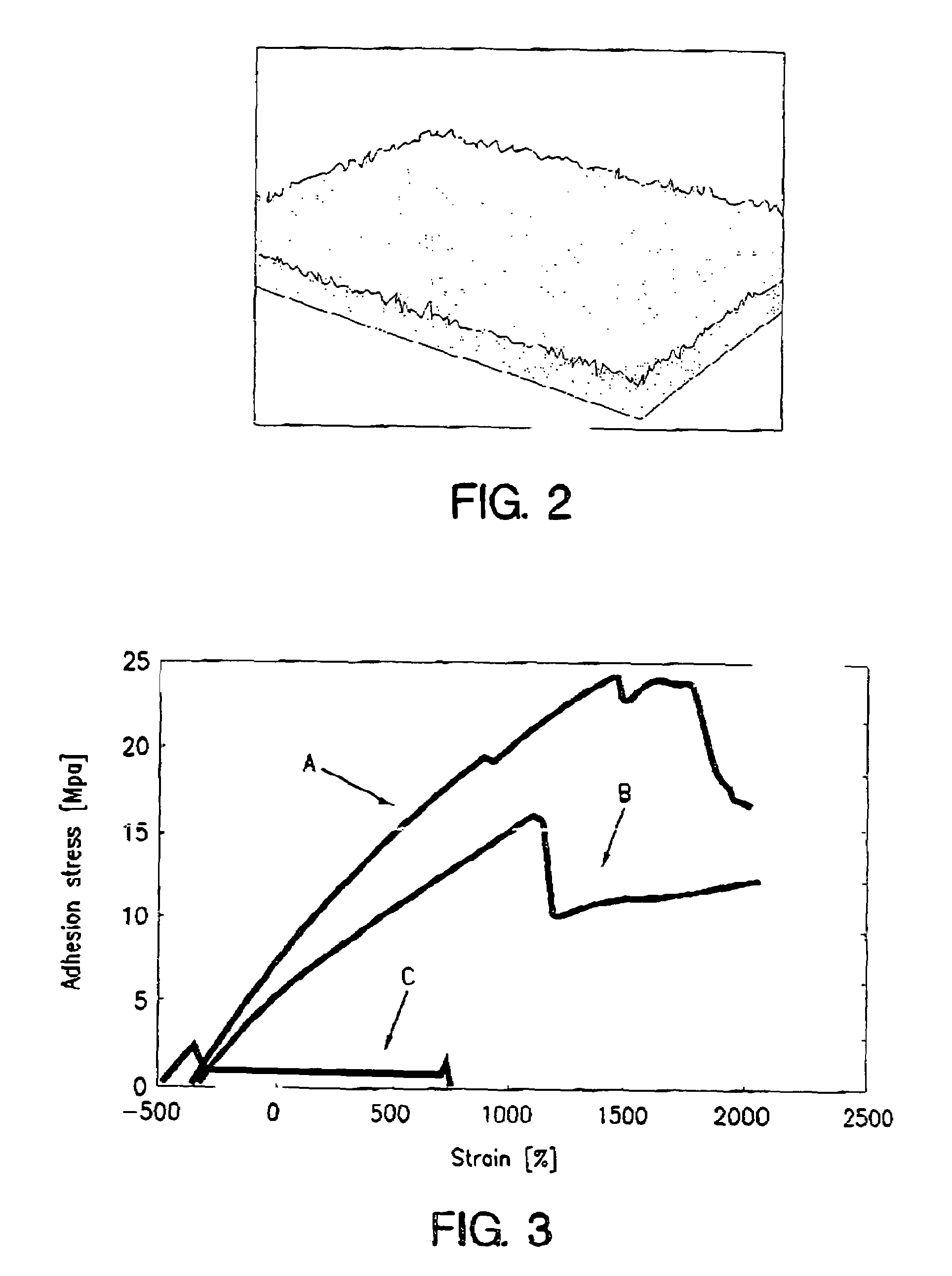Coating method and coated devices
a coating method and coating technology, applied in the field of ceramic coating deposition methods, can solve the problems of high temperature required in the process, inability to deposit films around corners, and said methods require advanced deposition equipment, and achieve the effect of improving biocompatibility and low temperatur
- Summary
- Abstract
- Description
- Claims
- Application Information
AI Technical Summary
Benefits of technology
Problems solved by technology
Method used
Image
Examples
example
[0073]This non-limiting example describes one embodiment of the surface coating method according to the invention more in detail, and the mechanical properties of these coatings.
[0074]In this example, round bars of pure medical grade titanium, ASTM Gr.2, with a diameter of 6 mm, were used substrates. The titanium bars was pretreated with wet blasting using aluminum oxide grit with a particle size of 100–120 mesh. The blasting was performed with a pressure of 1 bar (air pressure). After blasting, the surface roughness and morphology was characterized using Scanning Electron Microscopy (SEM) and optical profilometry (OP). The surface roughness was shown to be in the range of Ra=0.6–0.7 μm after wet blasting, see FIG. 2.
[0075]To improve the bonding between the titanium and the coating, a secondary blasting of the metal surfaces was performed using calcium aluminate (CA) particles with a grit size between 0 and 22 μm (90%) at a pressure of ˜10 bar (air pressure). The resulting surface m...
PUM
| Property | Measurement | Unit |
|---|---|---|
| Ra | aaaaa | aaaaa |
| temperature | aaaaa | aaaaa |
| temperature | aaaaa | aaaaa |
Abstract
Description
Claims
Application Information
 Login to View More
Login to View More - R&D
- Intellectual Property
- Life Sciences
- Materials
- Tech Scout
- Unparalleled Data Quality
- Higher Quality Content
- 60% Fewer Hallucinations
Browse by: Latest US Patents, China's latest patents, Technical Efficacy Thesaurus, Application Domain, Technology Topic, Popular Technical Reports.
© 2025 PatSnap. All rights reserved.Legal|Privacy policy|Modern Slavery Act Transparency Statement|Sitemap|About US| Contact US: help@patsnap.com



